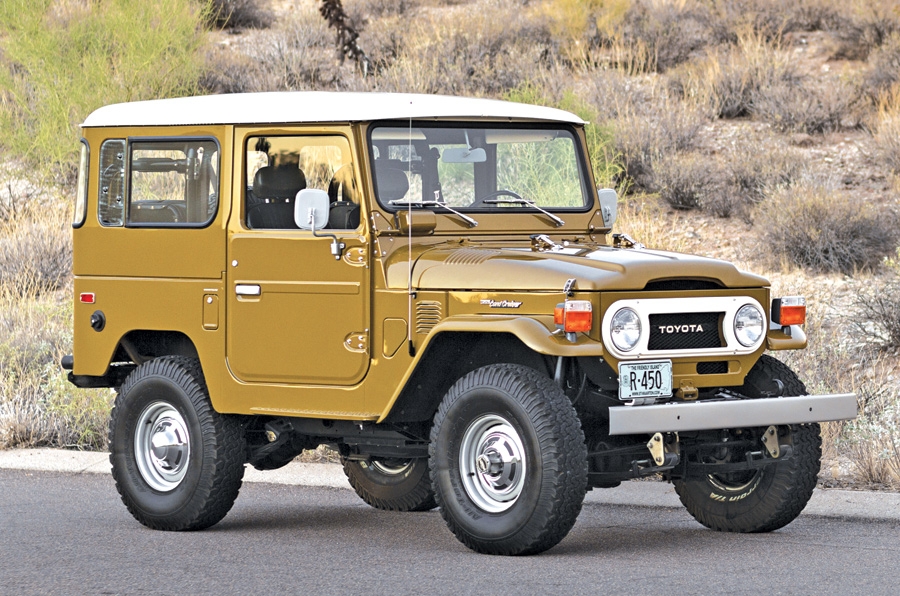
Back when I first profiled the Toyota FJ40 Land Cruiser as an Affordable Classic (February 2012, p. 34), they were the up-and-coming thing. I won’t be so forward as to say that my scribbles helped push the market up, but the ink was barely dry before they soared in value.
Superb examples were selling at either side of $100k, and because of that, it seemed like every auction house had to have one on their docket.
Fast forward to 2014, and every Arizona auction had at least one Toyota FJ40 Land Cruiser consigned. It was as if the state auction board demanded, “We’ll only approve your license if you sell a Land Cruiser.” And yes, each venue also had one that was declared sold. Indeed, Barrett-Jackson had significantly more Land Crushers than the usual auction stalwart for the past few decades, the 1978 Corvette Indy Pace Car Edition (three Pace Cars versus 17 FJs).
A bounty in Arizona
Notice a trend in the chart below? “No reserve” ruled the week. Consignors seemed to sense that the FJ40 market is softening, and they gambled that buyers would bid deeper if they knew the vehicle would definitely sell. Other sellers just seemed to cast their FJ40s onto the market and to where it landed — win, lose, or draw — because they weren’t really certain where to draw the line for a reserve.
Of the 24 FJ40s offered, 23 sold, for an average sale of $71,523. Not a bad average, considering the wide price swing from $19,250 to $101,750. Clearly, these were top-notch examples, with nary a beat-up rock-hopper in the crowd.
Market saturation
There were a few spectacular sales to those who really wanted the best FJ40s — and could pay big bucks. Now, the market is collapsing back to the original cadre of enthusiasts who don’t give a damn about concours-quality trailer queens. These fans want to use their FJ40s — and actually get them dirty.
Indeed, the specialty aftermarket builders, such as ICON, now own most of the remaining high-dollar market — especially for non-stock configurations. This makes sense. If you’re going to drop $100k-plus into an FJ40, you damn well want it exactly the way you want it — not what the guy at the restoration shop seems to think you might like. This is the case if the restorer wants to take the FJ40 to the way it was originally manufactured.
To a lesser extent, this is also what’s happening with the first-generation Ford Bronco. However, the Bronco didn’t have the meteoric rise of the Land Crusher, so the rises and falls are not as dramatic. Yet they are still there.
A downhill grade for many
It’s a gamble to forecast collector-car prices (let alone collector trucks), but my cloudy crystal ball says the fast climb to the summit may be over for most FJ40s.
I’m even more certain that we’ve reached the peak prices on modified examples — and yes, that means powertrain-component swaps and other deviations from stock that can’t be changed with a socket set in the parking lot.
As seen in about every other facet of collector cars, the superb, bone-stock examples will continue to hold their own, with the few ultra-rare, high-quality, original examples (not to be confused with neglected barn finds) at the top of the market.
Even the modern retro FJ40 has fallen from grace. It is scheduled to be retired at the end of the 2014 model year — thanks to lackluster sales in recent years. As such, it falls lockstep with just about every other retro-mobile: Sales are strong in the initial few years for those who want a modern version of their icon, but after they get theirs, everyone else — especially Generation X and younger — couldn’t care less.
Let’s just say the FJ40 has evolved from a flavor-of-the-month speculator special to a solid collectible, with predictable pricing. ♦